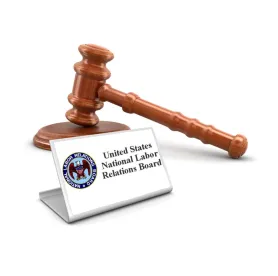On December 13, 2022, the National Labor Relations Board (NLRB) expanded the remedies that may be awarded in unfair labor practice cases. The board ruled 3-2 that affected employees may recover compensation for "all direct or foreseeable pecuniary harms" resulting from an employer’s unfair labor practice as a matter of course in all cases involving "make whole relief." The board ordered recovery of pecuniary harm only, but left open the question of compensatory damages for items such as emotional distress, stating that the issue was not presented by the case before it.
The range of potential pecuniary harm that may be considered is broad. The NLRB gave examples for out-of-pocket medical expenses, credit card debt/interest, legal cost stemming from an improper arrest, job search expenses, costs associated with eviction/repossession of personal property, tax penalties for early withdrawal of retirement savings and "other costs simply in order to make ends meet." The board further noted that the range of potentially compensable harms was too broad to catalog in the opinion.
The two management-aligned members dissented in part and concurred in part. Significantly, they agreed with the general proposition that all economic harm should be compensable provided it is caused directly or indirectly by the violation, and the causal link between the violation and the economic harm "is sufficiently clear." Their main point of disagreement was extending recovery for all items of damages that were "reasonably foreseeable." On a practical level, it is unclear how if at all that might affect the scope of a remedy.
The NLRB’s ruling was issued in Thryv, Inc., 372 NLRB No. 22 (Dec. 13, 2022) with immediate effect, so it will be applied to all pending (and future) cases. The General Counsel’s office, the prosecuting arm of the board, still maintains the burden of proof during compliance proceedings to demonstrate a link between any alleged economic damages and the employer's (mis)conduct. The decision does not alter the employer’s right to dispute the monetary value of damages, that the damages are not direct or foreseeable based on the employer’s alleged unfair labor practice, or that the damages would have resulted regardless of the employer's (mis)conduct.
In a separate 3-2 decision, the NLRB ruled in American Steel Construction Inc., 372 NLRB No. 23 (Dec. 14, 2022) that a union's proposed bargaining unit in which it seeks representation can be expanded to include more employees only if the employer proves that the additional employees share an "overwhelming" community of interest with the employees in the union proposed unit. Prior law had required the union to demonstrate that a larger unit proposed by an employer was inappropriate.
While the change may seem academic, the decision will make union organizing significantly easier. To obtain a representation election, the union must obtain support from at least 30% of the unit employees. Thus, if an employer expands the number of employees in a unit, the level of union support may fall below 30% and the petition for the election will be dismissed. Likewise, to obtain recognition a union must obtain votes from 50% plus one of the employees in the unit, so the larger the unit the more votes the union needs to garner. Likewise, the ruling will enable more piecemeal organization of a plant, facility, or organizational unit, which is often a favored union tactic, and can lead to fractured units each with separate contracts and contract dates.
Employers seeking to head off this sort of piecemeal organizing should look at the organizational structure of the workforce from the point of view of commonality of supervision, commonality of terms and conditions and the degree of interchange of employees between different sub-units. The greater the commonality and the greater the frequency with which employees move between subgroups, the greater will be the employer's ability to insist on a larger or facility-wide unit.






 />i
/>i

